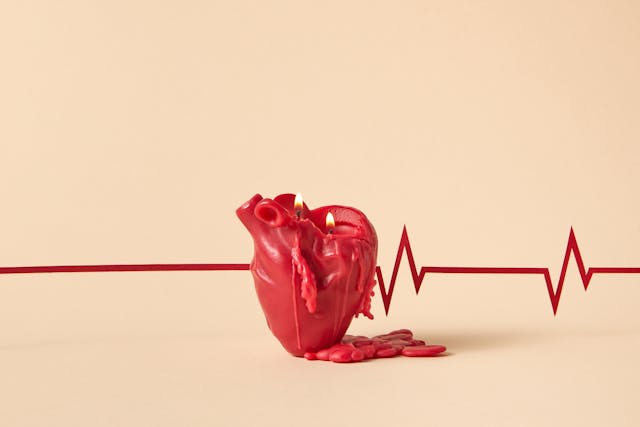Discover the Vaughan Williams classification of antiarrhythmics with detailed explanations, real-world insights, and practical understanding.
When people first hear about the Vaughan Williams classification of antiarrhythmics, they often imagine it’s just another rigid system from pharmacology textbooks. But here’s the truth: this framework is more than memorizing drug classes. It’s about understanding how these medications bend the heart’s electrical currents, sculpt rhythms, and rescue patients from potentially life-threatening arrhythmias. Like other frameworks that endure across decades, this classification system has proven its worth through consistent application and refinement. To really grasp this, you need more than a chart, you need context, nuance, and a sense of why this classification still matters decades after its creation.
Let’s dive deep, break the walls of rote memorization, and turn this topic into something practical and unforgettable.
What You'll Discover:
Why a Classification System Was Needed
Arrhythmias aren’t simply “heartbeats gone wrong.” They’re electrical storms inside the cardiac tissue, fueled by imbalances in ion movement. Physicians needed a framework to organize antiarrhythmic drugs, not just by chemical structure, but by their effect on cardiac action potentials.
This is where Miles Vaughan Williams, a British pharmacologist, stepped in during the 1970s. His classification gave order to chaos by dividing drugs into four main classes (later expanded with subgroups). The goal was simple: connect mechanism of action to therapeutic outcome.
The Core Principle Behind the Vaughan Williams Classification
Think of the heart’s electrical activity as a five-phase action potential (0 to 4). Each class of antiarrhythmics interferes with one or more of these phases. Instead of learning “drug names in boxes,” you start seeing the bigger picture: which channel they block, how conduction changes, and what rhythm is stabilized.
The Four Main Classes of Antiarrhythmics
Class I – Sodium Channel Blockers
These drugs slow conduction by inhibiting sodium influx during Phase 0. But they’re not all created equal, which is why Vaughan Williams broke them into subgroups.
Subclass IA
- Moderate sodium channel blockade.
- Prolongs action potential duration and refractory period.
- Example use: atrial fibrillation, supraventricular arrhythmias.
Subclass IB
- Mild sodium channel blockade.
- Shortens action potential duration.
- Example use: ventricular arrhythmias, especially after myocardial infarction.
Subclass IC
- Strong sodium channel blockade.
- Minimal effect on action potential duration but profoundly slows conduction.
- Example use: life-threatening ventricular arrhythmias, resistant supraventricular tachycardias.
Unique Angle: Think of Class I as “precision screwdrivers.” They don’t smash the entire circuit; they adjust conduction screws at different depths. IA tightens broadly, IB shortens sharply, IC tightens the hardest.
Class II – Beta Blockers
These drugs don’t directly alter ion channels; instead, they tone down sympathetic nervous input by blocking beta-adrenergic receptors.
- Reduce heart rate, conduction velocity, and automaticity.
- Especially useful in arrhythmias triggered by stress or adrenaline surges.
- Example use: atrial fibrillation rate control, post-MI arrhythmia prevention.
Unique Angle: If Class I drugs are electricians adjusting wiring, Class II are like turning off the amplifier. They lower the volume of sympathetic drive that pushes the heart into overdrive.
Class III – Potassium Channel Blockers
These extend repolarization by blocking potassium efflux in Phase 3. The result? A longer refractory period and greater resistance to re-entry circuits.
- Highly effective for both atrial and ventricular arrhythmias.
- Famous representative: amiodarone (a “jack-of-all-trades” antiarrhythmic).
Unique Angle: Picture Class III as extending the red light at an intersection. Cars (impulses) must wait longer, reducing the risk of collisions (arrhythmias).
Class IV – Calcium Channel Blockers
These target L-type calcium channels, particularly at the AV node.
- Slow conduction, prolong refractoriness, and decrease automaticity.
- Especially useful in supraventricular arrhythmias like atrial fibrillation and paroxysmal supraventricular tachycardia.
- Not effective against ventricular arrhythmias.
Unique Angle: If the AV node is a busy train station, Class IV drugs slow the ticketing process, ensuring trains (impulses) don’t depart chaotically.
The “Class V” and Beyond
Over time, physicians realized many drugs didn’t fit neatly into Vaughan Williams’ four boxes. This gave rise to the “Class V” category, which includes agents with unique mechanisms:
- Adenosine: Works via purinergic receptors, briefly halting conduction through the AV node.
- Digoxin: Increases vagal tone, slowing AV nodal conduction.
- Magnesium sulfate: Stabilizes cardiac membranes, especially in torsades de pointes.
Unique Angle: Think of Class V as the “miscellaneous toolkit” drawer, unexpected but indispensable in specific scenarios.
Strengths and Weaknesses of the Vaughan Williams Classification
No system is flawless. Vaughan Williams’ classification remains central in teaching, but clinicians know its limits.
Strengths
- Simple and easy to remember.
- Connects mechanism to clinical use.
- Provides a universal framework across the globe.
Weaknesses
- Oversimplifies drugs with multiple actions (e.g., amiodarone fits into several classes).
- Ignores drug side effects and toxicity profiles.
- Doesn’t account for newer agents that work differently.
Why This Classification Still Matters
Even with modern electrophysiology and advanced mapping technologies, the Vaughan Williams classification endures. Why? Because it anchors our thinking. Medical students, residents, and even cardiologists continue to use it as the first step before diving into more nuanced frameworks like the Sicilian Gambit (a newer classification).
It’s like learning classical music before jazz improvisation. You need structure before freedom.
Real-Life Applications: From Textbook to Bedside
- A patient with post-MI ventricular arrhythmia? Class IB might be the choice.
- An anxious young adult with supraventricular tachycardia? A beta blocker could calm the sympathetic storm.
- A stubborn case of atrial fibrillation not yielding to standard therapy? Amiodarone often becomes the last-resort giant.
By linking mechanism to real patient scenarios, the Vaughan Williams system comes alive.
Key Takings
- The Vaughan Williams classification divides antiarrhythmic drugs into Classes I–IV, with a fifth “miscellaneous” group.
- Each class corresponds to a distinct action on cardiac action potentials.
- Class I fine-tunes sodium channels, Class II tames sympathetic drive, Class III prolongs refractoriness, and Class IV calms calcium entry.
- Many drugs blur boundaries, making the system imperfect but still useful.
- The classification thrives as a teaching tool and a clinical reference, bridging the gap between electrophysiology theory and bedside care.
Additional Resources:
- Arrhythmia Resources: Comprehensive educational content on arrhythmias, prevention, and treatment strategies.





